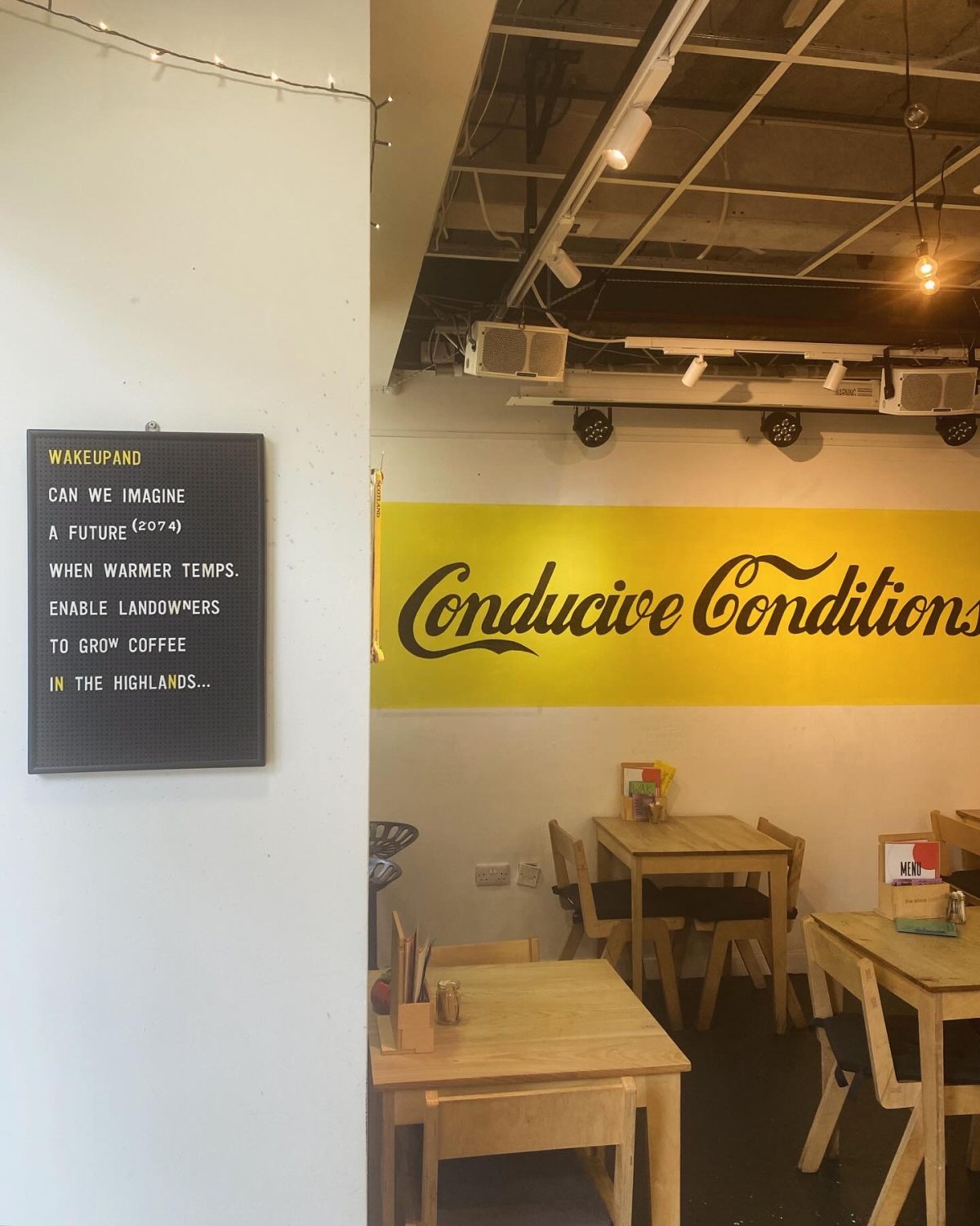Artist Martin Hamblen shares an insight about his current exhibition at The Stove Cafe – wakeupand (2024). This guest exhibition was commissioned by the Stove and is part of our Conversing Building Project.
By Martin Hamblen
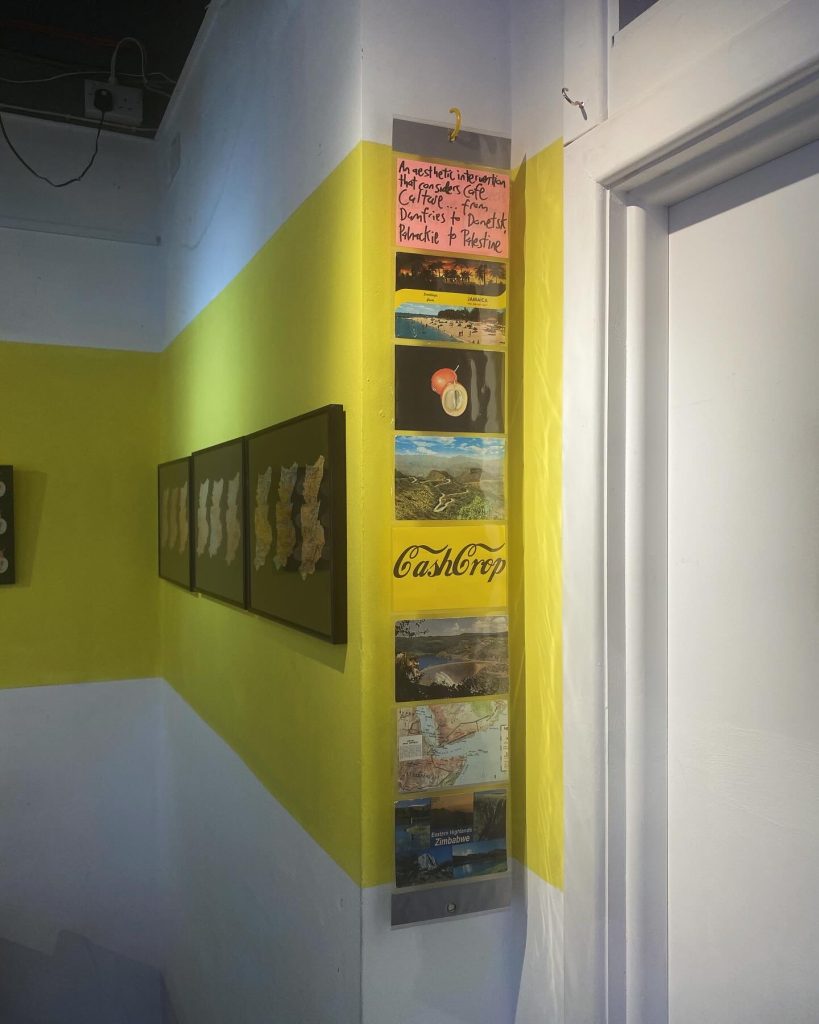
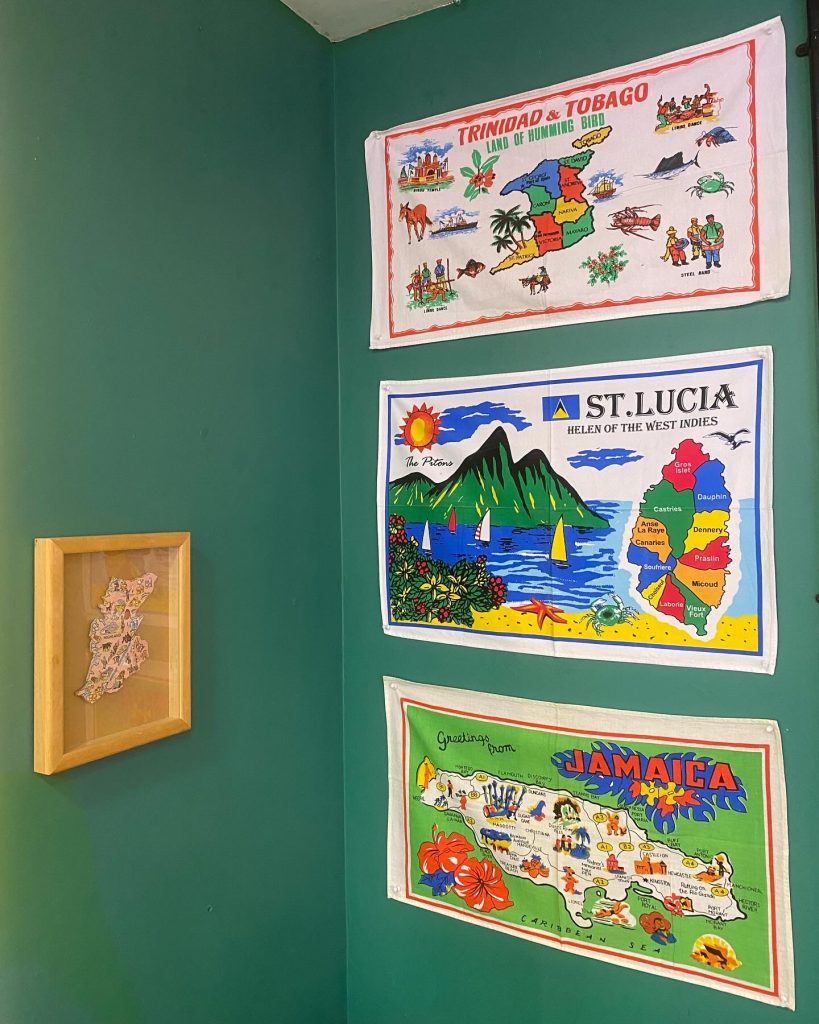
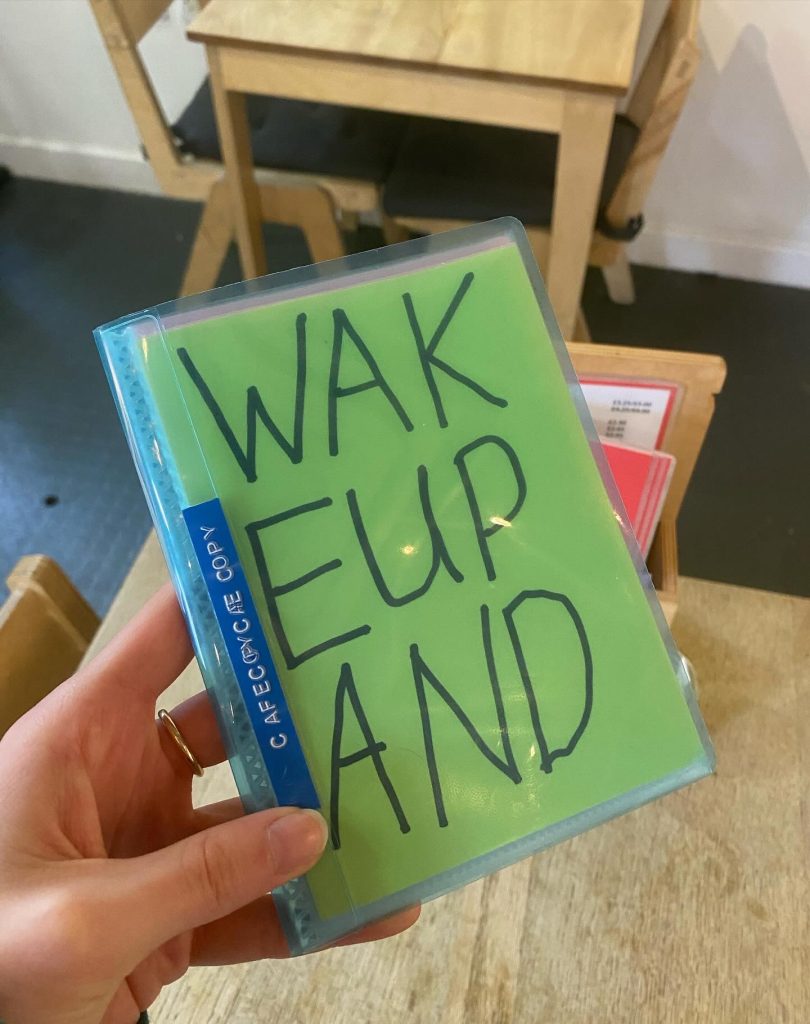
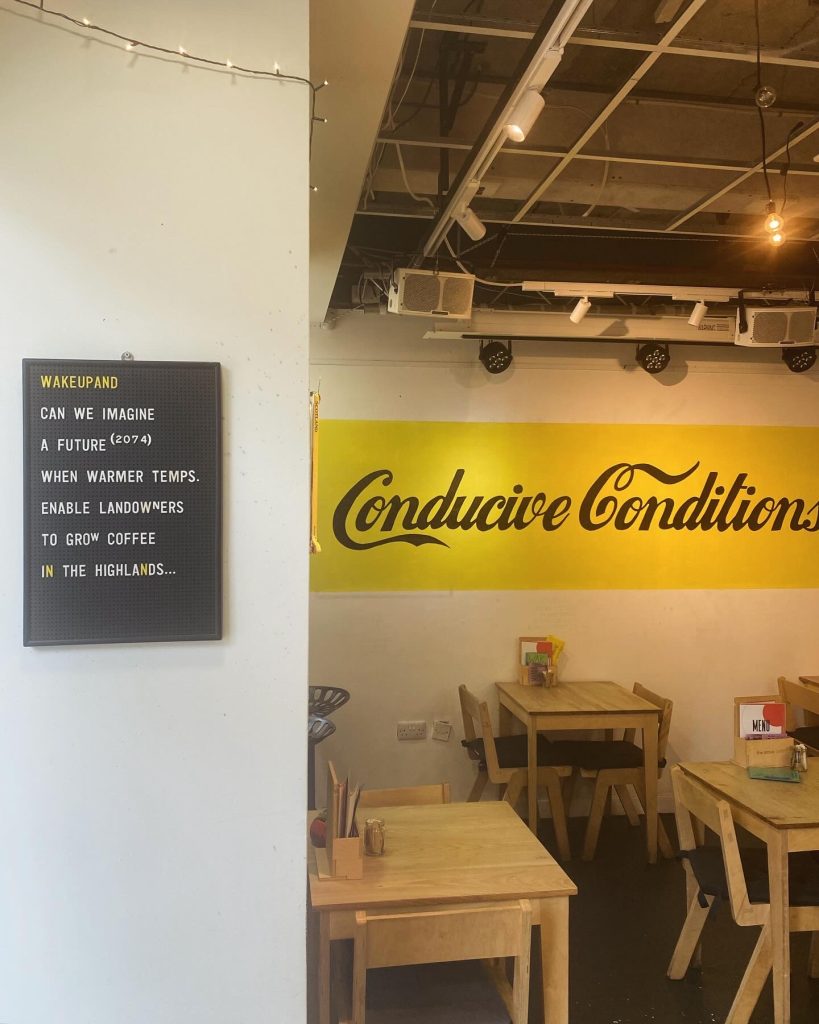
When is an exhibition, not an exhibition?
Google ‘exhibition’ and the definition that drops down states “a public display of works of art or items of interest, held in an art gallery or museum or at a trade fair.” Conversing Building is not that.[1]
I was feeling sceptical about the project until I read about this year’s Artes Mundi prize winner, Taloi Havini. “An artist from a small Pacific Island who has found unexpected resonances with her work in the mountains […] of Wales […] Hyena (day and night) […] dominates the wall of the bustling cafe at Chapter Arts Centre.”[2]
Usually, an artist writes a statement to accompany an exhibition. But this, unusual business, demands questions: buildings? conversing? Obviously, bricks and mortar can’t talk so what does The Stove mean?
Late last century, curator Nicolas Bourriaud published a book called Relational Aesthetics. He defined the term as “artistic practices which take as their theoretical and practical point of departure the whole of human relations and their social context, rather than an independent and private space.”[3]
So, the chairs are talking to the tables, the tables to the walls, the walls to the windows, the windows to the street. Sometimes, the process of thinking about asking a question, and anticipating answers, stops the question.
Scientists hypothesise. To misquote Yoko Ono and John Lennon, they imagine. At The Stove’s AGM the guest speaker, Dr. Duckie, introduced the concept of “Homemade Mutant Hope Machines”.[4] The key concept being, believing that better worlds are possible.
The words on the windows, talking to the street, read ‘Colonial Cartography’. Sign written in a font akin to Coca-Cola (a famous fizzy drink that may be made of cabbage and caffeine). Fizzy sounds nice and innocent. But the process of carbonation means adding carbon dioxide. Sound familiar?
The ‘art world’ appropriates languages from other fields. Biologically speaking, plants pioneer places. The first plant colonises. Then, there is a process of succession and an ecosystem evolves.
According to the Tate “intervention applies to art designed specifically to interact with an existing structure or situation, be it another artwork, the audience, an institution or in the public domain.”[5]
This aesthetic intervention aimed to consider Cafe Culture, in the context of conversing buildings. I asked: Can we imagine a future (2074) when warmer temperatures enable landowners to grow coffee in The Highlands? Also, can we imagine a world without carbonated cabbage juice? Is it possible? Poetically, of course.
Further Reading;
- Damian Carrington (2024), Geologists reject declaration of Anthropocene epoch, The Guardian.
- Bill McGuire (2024), 46C summer days and ‘supercell’ storms are Britain’s future – and now is our last chance to prepare., The Guardian.
- Dan Saladino (2024), There are more than 1,000 varieties of banana, and we eat one of them., The Guardian.
- Jonathan Watts (2024), Atlantic Ocean circulation nearing ‘devastating’ tipping point, study finds., The Guardian.
[1] https://thestove.org/projects/ongoing-projects/conversing-building/
[2] https://artesmundi.org/taloi-havini-wins-tenth-anniversary-artes-mundi-prize/
[3] https://www.tate.org.uk/art/art-terms/r/relational-aesthetics
[4] https://duckie.co.uk/dr-duckie/about-dr-duckie
[5] https://www.tate.org.uk/art/art-terms/a/art-intervention

